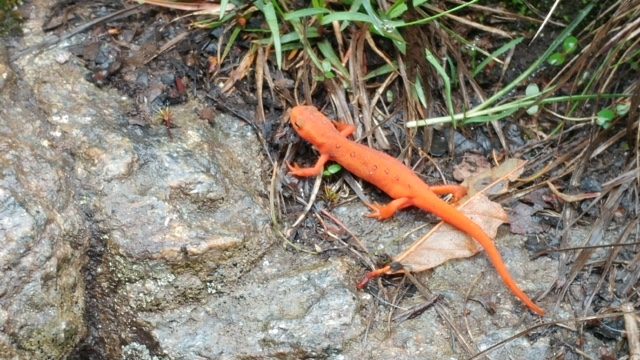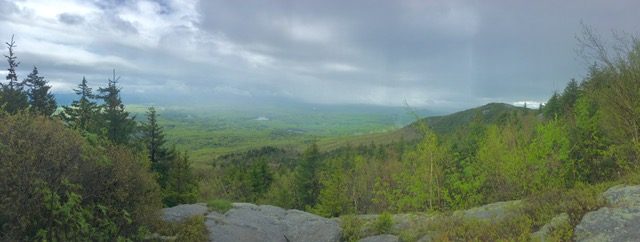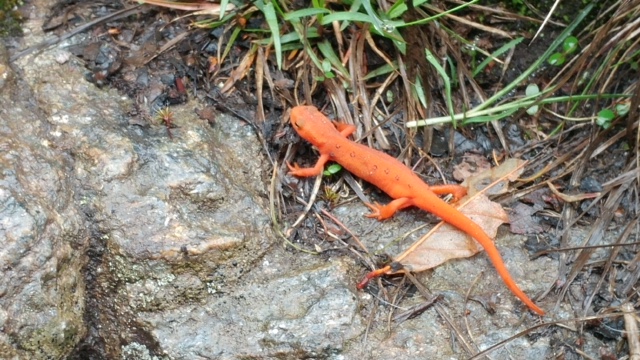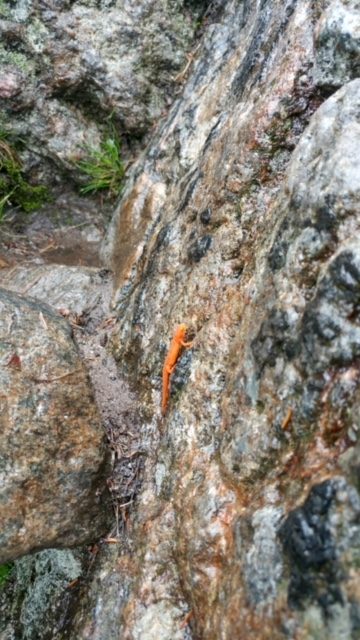By: Claire Adams, Interpretive Ranger at Greenfield and Monadnock State Parks
For the next few months, I have the privilege of serving as one of the Interpretive Rangers at Monadnock State Park. My job as an interpreter is to help the visitors learn more about both the natural and cultural history of the mountain, from forest succession, vernal pools, and geology to Native American culture, colonial European influences, and Transcendentalist inspiration. And in order to interact with the most visitors, I need to be where the people are: on the trails.
Now, to be honest, the prospect of hiking a mountain a couple times a week did sound like a great opportunity to challenge my growth as an interpreter. But at the same time, the hiking aspect of the job intimidated me. While I have enjoyed hiking for most of my life, I have never been the most confident and fastest hiker. Therefore, in order to prepare myself for the job, I decided to summit Monadnock about a month before leaving for the park.
The day that some of my fellow SCA NH AmeriCorps members and I decided to hike Monadnock turned out to not have the most promising weather forecast: humid and misty with a high chance of rain in the afternoon. In fact, the forecast almost had us planning our trip for another day. But realizing that we wouldn’t have another opportunity for several weeks, we decided to go through with our original plan. So we packed into the car and headed through the misty, rainy morning to the park.
If nothing else can be said of that trip, it gave me a vivid memory of my first ascent of Mt. Monadnock. Between the slippery, wet rocks and the cloud enveloped view at the peak, there are many moments about that day that will stick in my mind for years to come. But the most memorable part of that day had little to do with the hike itself, but rather with the intricacies of the peaks’ ecology that become more noticeable when the trails are less crowded and slick terrain necessitates a slower pace.
And the number one thing that stood out: Eastern Red-Spotted Newts. All thirteen of them. Yes, I counted! These brightly colored little amphibians are actually New Hampshire’s state amphibian and therefore are fairly common to see, especially on a warm, rainy spring day. But the reason I took such careful notice of those newts was because at the time, I was right in the middle of leading field trips at Bear Brook State Park for the elementary students I and my fellow SCA program members taught during the winter. One of the activities that the students would do on the field trip was a salamander log roll, where they would, as the name suggests, roll over damp logs in search of salamanders. Eastern Red-Spotted Newts were among the most popular species they would find, causing these little creatures to be at the front of my mind on the hike.

The Eastern Red Spotted-Newt, or Red Eft, is a very charismatic little animal, with its bright orange body and even brighter red spots lining both sides of its back. But they are very small, averaging 1-3 inches in their land dwelling juvenile stage. Like all amphibians, they need to be close to water at all times, helping to keep their skin moist enough so they can breathe through it. Therefore, on a landscape like Monadnock, you will usually only see them when it is raining or just following a storm.

This post is a reminder to always be on the lookout for the little things; it’s surprisingly easy to miss things right under your nose if you aren’t aware of them. So make sure to look out for some Eastern Red-Spotted Newts if you ever find yourself hiking Monadnock in the rain.
*But just a fair warning: if at all avoidable, DO NOT hike Monadnock in the rain! The smooth rocks become even more slippery when wet. While I highly recommend summiting this special peak, I would reschedule a visit if the weather is not looking promising.



Sounds like a very educational and enjoyable opportunity to learn and discover hidden gems of NH.